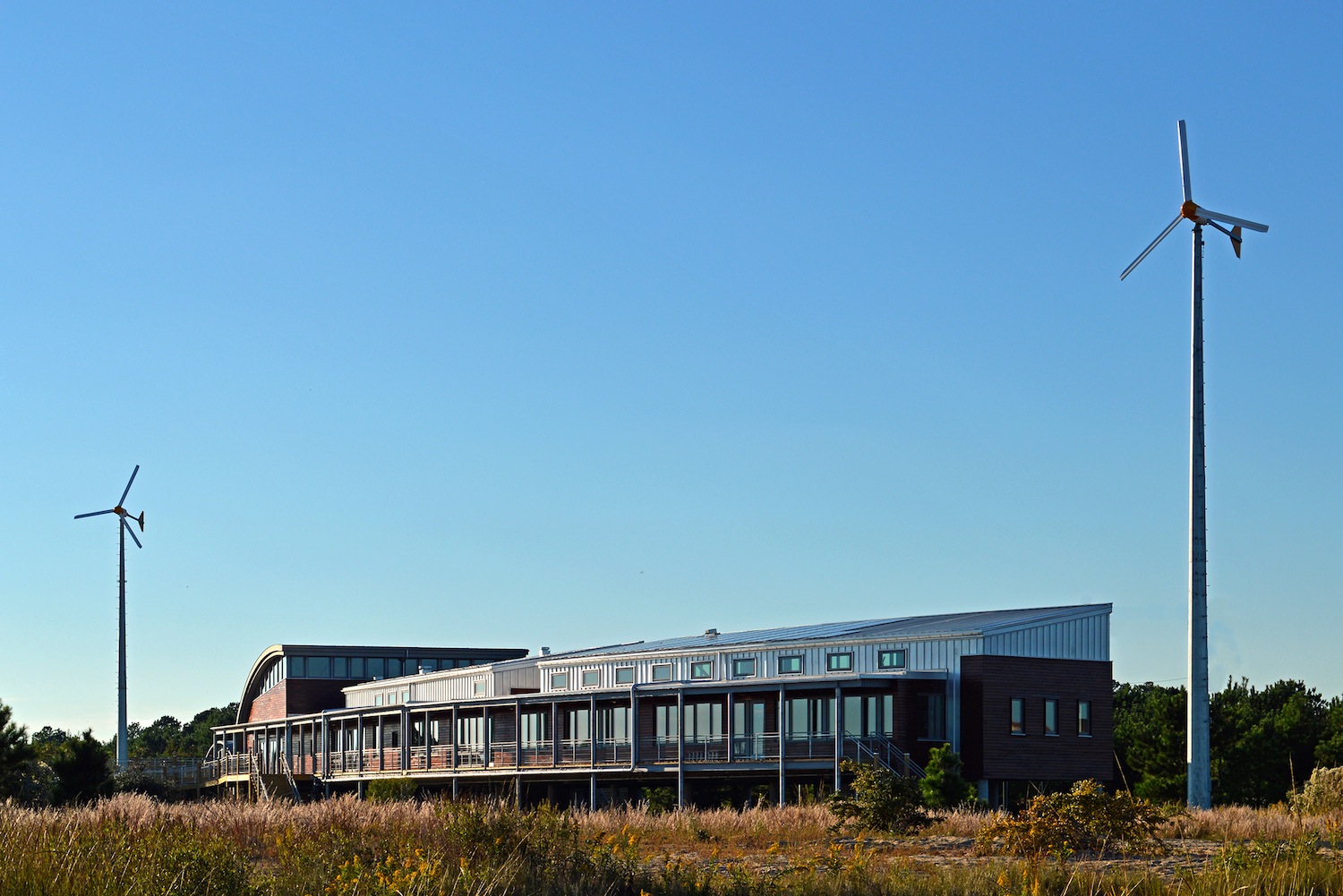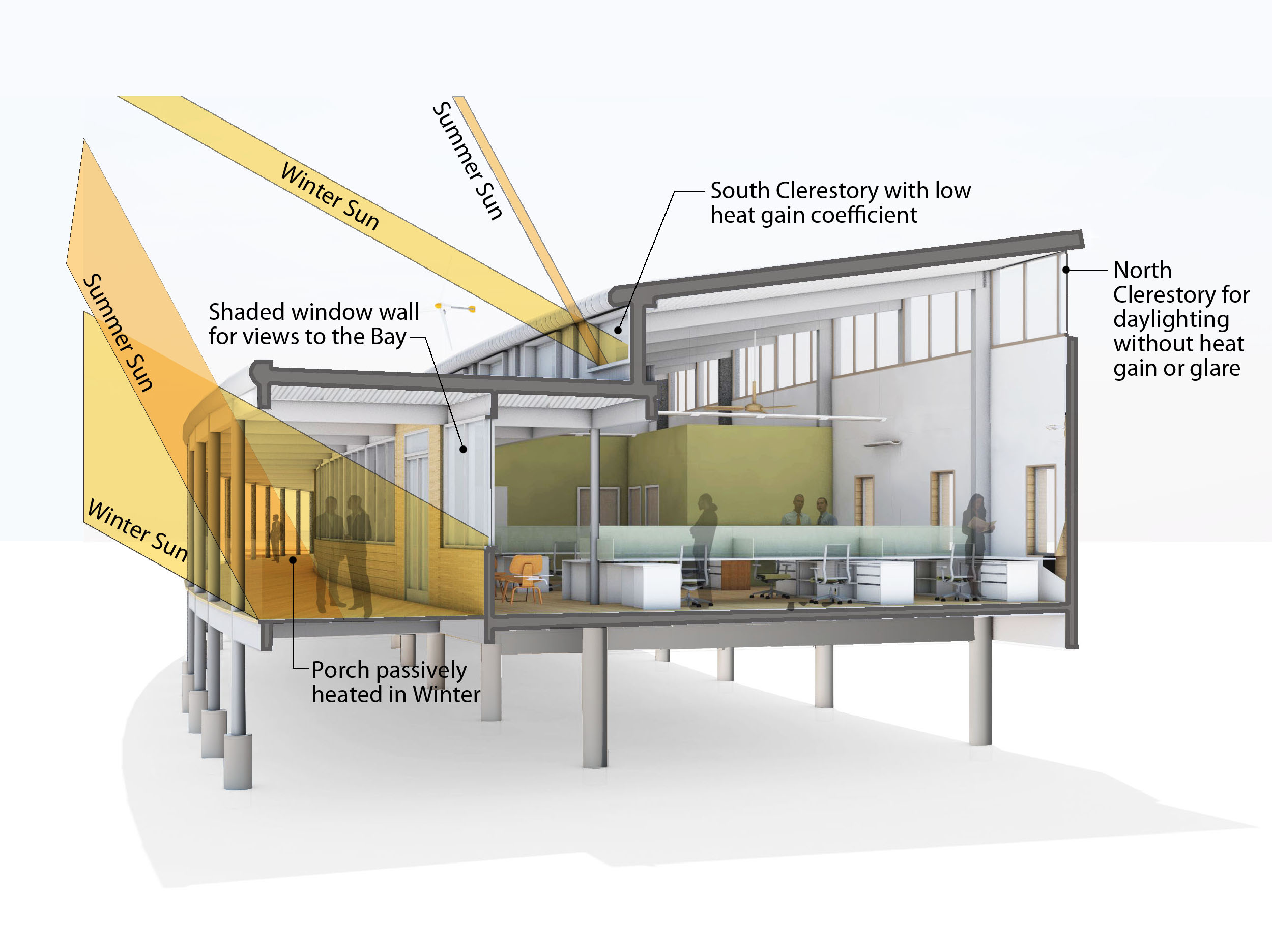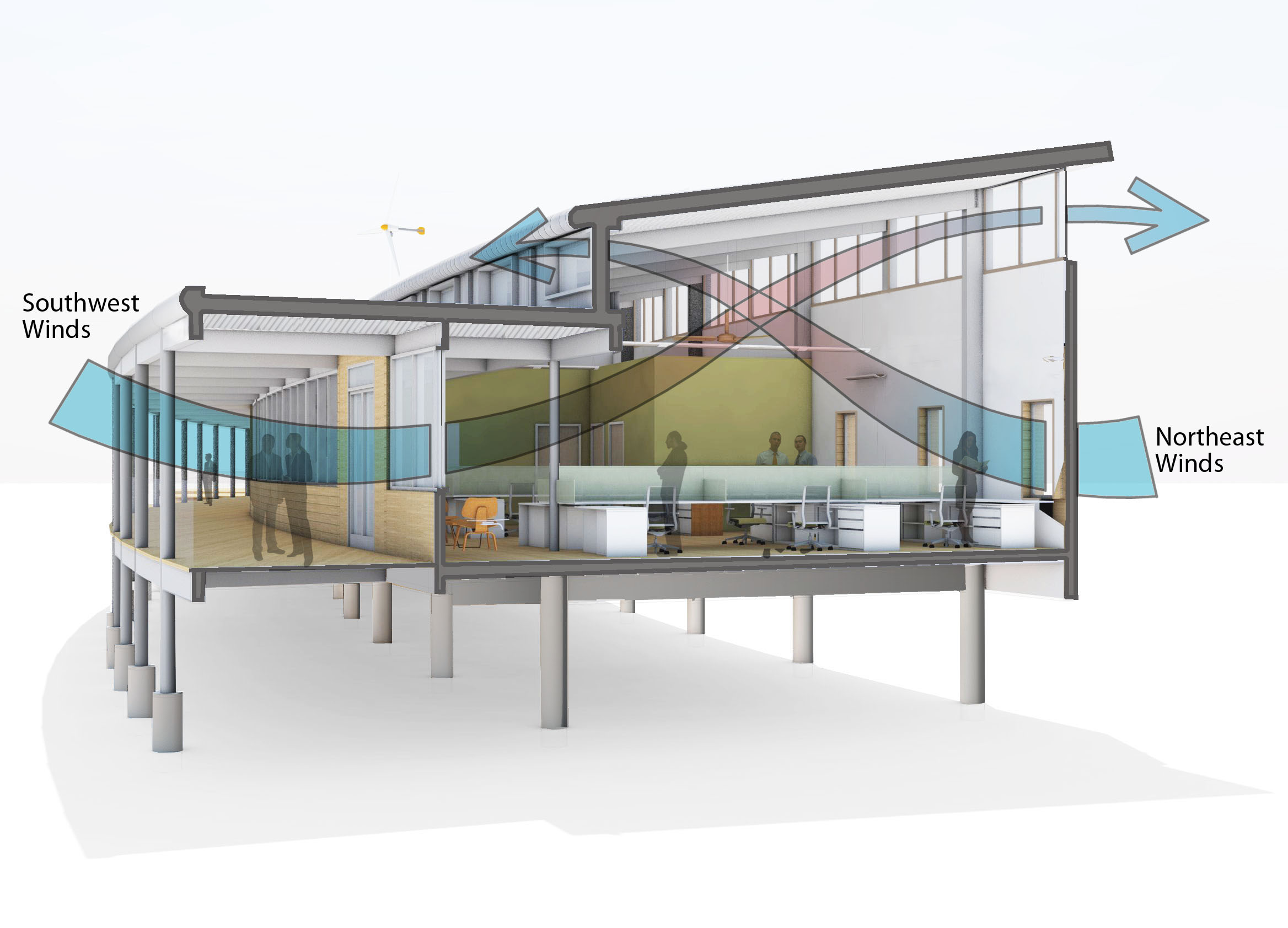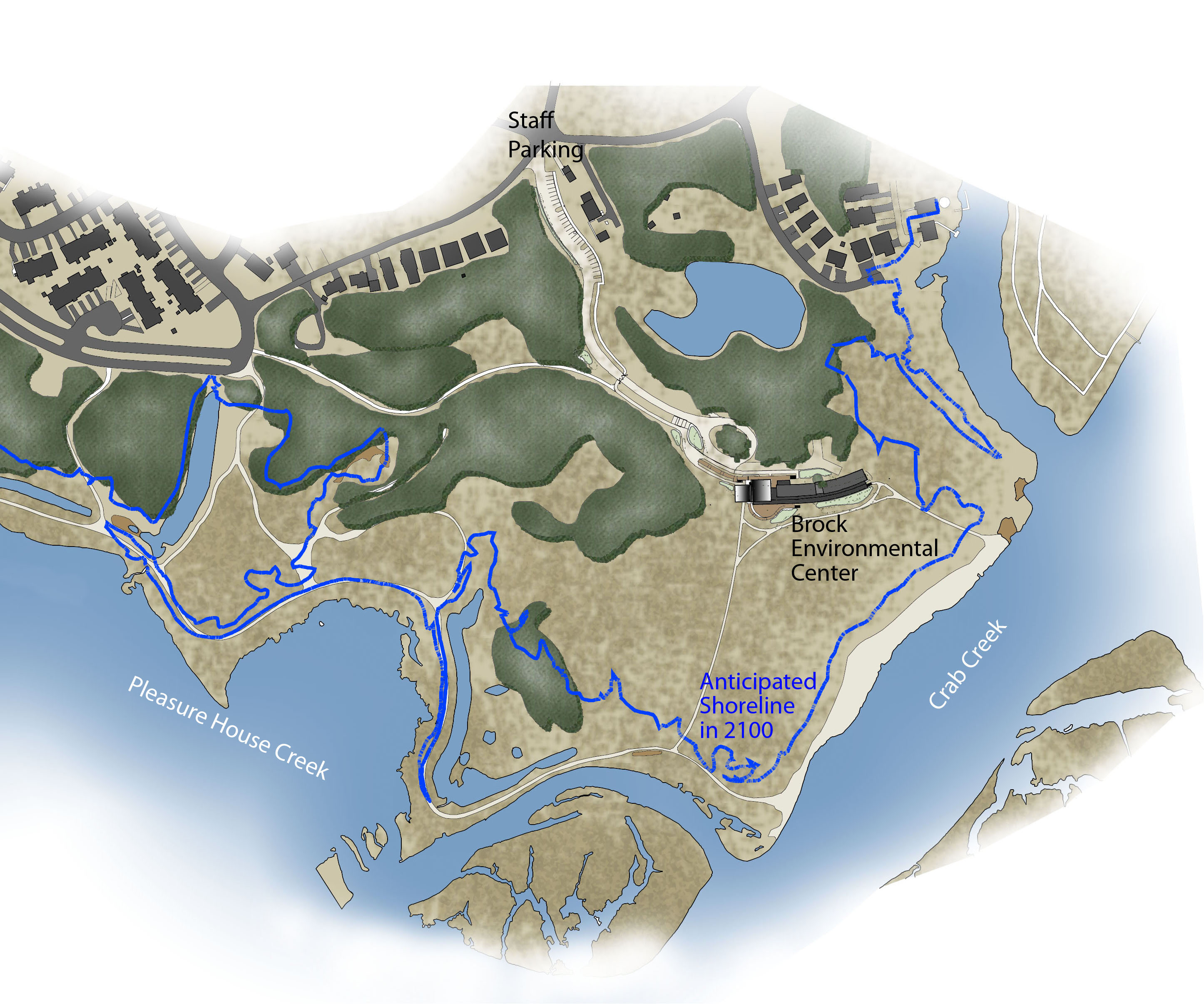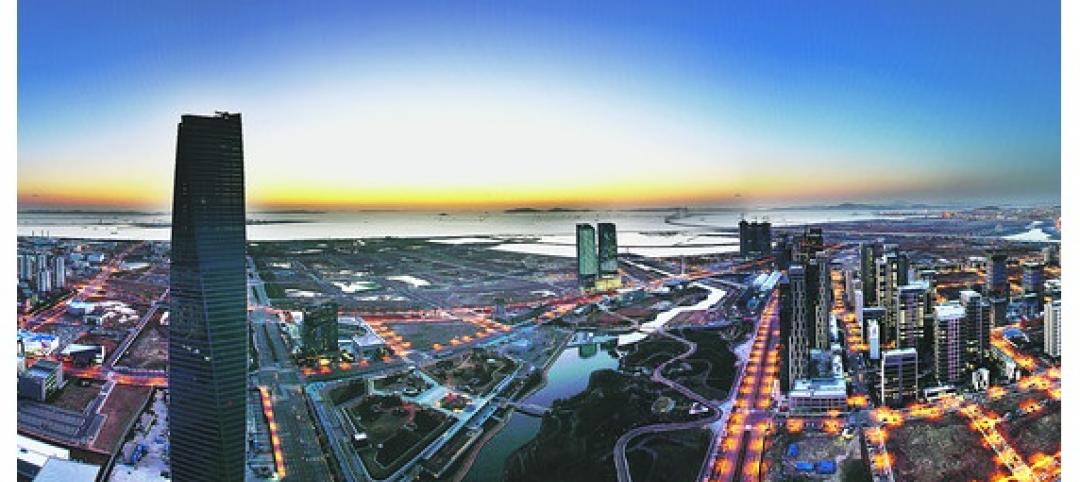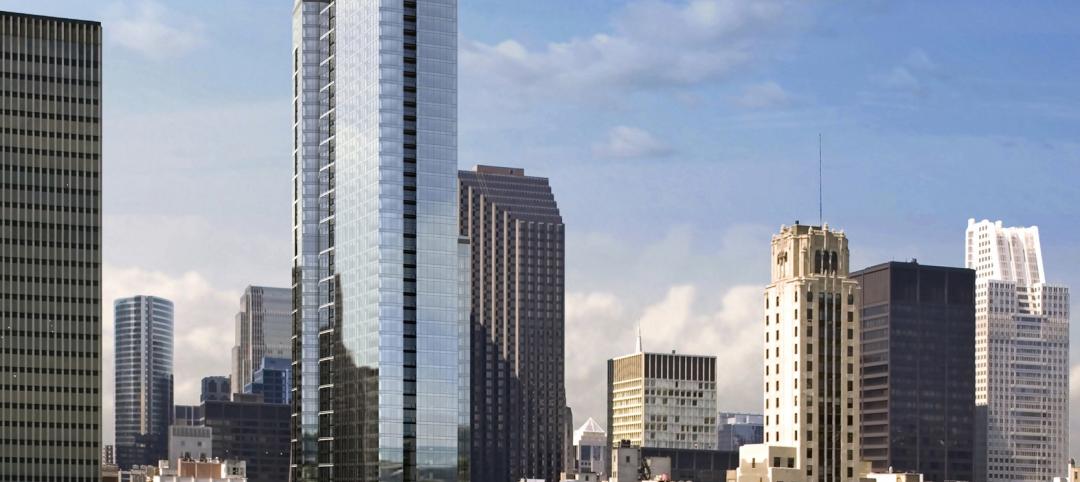The Chesapeake Bay Foundation’s (CBF) Brock Environmental Center reached construction completion today in Virginia Beach, Va. Designed by SmithGroupJJR and constructed by Hourigan Construction, the Center is an international model for energy and water efficiency and climate change resiliency.
The 10,000-sf, one-story building will serve as the hub for CBF’s Hampton Road office and support its Chesapeake Bay education, outreach, advocacy and restoration initiatives. In addition to offices for CBF and partner groups, the Center provides meeting rooms and exhibit display areas, and an 80-seat conference room designed to express CBF’s mission to defend one of the nation’s most valuable and threatened natural resources—the Chesapeake Bay.
Every aspect of the Center—location, materials, utilities, operation and use—meets the strictest environmental standards. “With the Brock Environmental Center, CBF is raising the bar for sustainability,” said Greg Mella, FAIA, LEED AP, SmithGroupJJR project manager and design architect.
“The Brock Center is a model for environmental awareness in our industry,” commented Mark Hourigan, president of Hourigan Construction.
The Center is targeting LEED Platinum designation and also strives to meet the strict standards of the Living Building Challenge (LBC), a green building certification program promulgated by the International Living Future Institute that defines the most advanced measure of sustainability in the built environment possible today. LBC standards require the facility to have “net zero” impact on the environment. The Brock Environmental Center would become the first building in Virginia to earn LBC certification; to-date, only five projects in the world have achieved Full Certification through the Living Building Challenge.
Designed for Resiliency on a Preserved Site
Completion of the Center concludes a successful community effort to save Virginia Beach’s 118-acre Pleasure House Point tract from development. As recently as 2008, developers intended to build more than 1,100 new high-rise condos and townhouses on the property. The collapse of the housing market in 2009, however, led to bank foreclosure of the property.
A community partnership with CBF, the City of Virginia Beach and the Trust for Public Land purchased the land from the bank in 2012, preserving it for open space and environmental education. The new Center, the only major structure on the entire 118 acres, takes up only one-half acre of CBF’s 10-acre parcel. Preserving the local ecology was paramount upon development of the site, which includes a boat pier with floating dock and an open-air education pavilion.
The project is situated on a coastal site to facilitate the client’s outdoor education program. The design anticipated the onset of sea-level rise and hurricanes: the building is set back 200 feet from the shore and sits on pylons 14 feet above sea level. Even the building’s structural steel system was designed to be capable of resisting 120-mph hurricane force winds.
“We had the opportunity to push the envelope on innovative and creative methods,” said Chris Brandt, executive vice president of Hourigan Construction. “There were so many certification levels that needed to be met that it was a job in itself to keep track of them all.”
Targeting Net-Zero Water, Energy and Waste
SmithGroupJJR designed the building to use very little energy by incorporating a series of aggressive, energy-saving features such as natural ventilation, natural daylighting and sunshading, highly efficient geo-thermal heating and cooling, and super insulation.
The Center is on track to be the first commercial-scale building in the continental U.S. to earn net-zero water status. A rainwater collection system will store rainwater in tanks under the building and then filter it for hand-washing and drinking through a state-of-the-art water filtration system licensed by the State of Virginia’s Office of Drinking Water. The Center features waterless, composting toilets, and all grey water (wastewater generated from sinks and showers) will be channeled through a wetland constructed of native plants where natural processes will clean and return it to the underground aquifer.
Net-zero energy status will be realized as the building generates its own electricity via solar and wind-powered renewable energy. The Center’s array of 38.8 kW rooftop photovoltaic panels will produce 60 percent of the building’s energy needs by converting the sun’s energy to electricity. Two small, 10-kilowatt wind turbines, 80’ tall, will contribute the remaining 40 percent of the building’s energy needs. Using only as much energy as it generates over the course of a year will enable the Center to earn net-zero energy certification. Surplus energy will be returned to the power grid.
Materials: Natural and Salvaged, “Red List” Chemicals Avoided
For the Center, construction materials were selected for their natural and simple properties. Preference was given to materials that are bio-based instead of those heavily processed, complex, synthetic and chemical-based. In specifying building materials, the design and construction team took special care to not use any materials on the International Living Future Institute’s “Red List,” which identifies chemicals and materials considered harmful to humans and the environment.
As a LBC requirement, recycled, salvaged and reclaimed materials were used extensively throughout the project. Examples include cypress siding from reclaimed sinker logs, wood flooring made from old fence posts and barn siding, interior wood trim from salvaged high school bleachers, and mirrors and toilet accessories from a local hospital demolition. The Rainwater Cistern and reception desk millwork were constructed from salvaged pickle barrels, and cabinet hardware consists of used champagne corks.
Hourigan Construction used cutting-edge building techniques in constructing the Center in order to minimize environmental impacts. In addition to using toxin-free building materials, sustainable measures used during construction included solar-powered tools and paperless construction documents. Normal construction equipment noise was reduced by the use of filters and baffles on the exhaust systems of all operating equipment, and slings or, in effect, construction equipment diapers were used so no equipment discharge would be deposited on the building site.
Even Hourigan’s on-site construction offices used less energy and water than normal systems. Instead of piping in treated water from the public grid, a deep fresh water well was installed to utilize existing water for construction use.
CBF: Continuing to Push the Boundaries of Sustainability
The Chesapeake Bay Foundation will occupy the building by the end of 2014. Prior, building occupants will be trained in the day-to-day operations and measurements of the renewable technologies. A 12-month measurement period is planned to commence in early 2015 and continue until early 2016. LBC certification is targeted for mid-2016.
The ultra-green Brock Environmental Center is the latest CBF initiative to push the boundaries of sustainability. The Foundation started with the 2000 completion of its Annapolis, Maryland headquarters building, the Philip Merrill Environmental Center, also designed by SmithGroupJJR. In 2001, the Merrill Center became the world’s first LEED Platinum building and was soon-after recognized as an international model of sustainability.
“What LEED Platinum was when we were designing the Philip Merrill Environmental Center, the Living Building Challenge is now,” said SmithGroupJJR’s Mella, who is based at the firm’s Washington, DC office. “Back then, we were designing to do less harm to the environment. Now, we’ve designed a building that could actually improve the environment,” he added.
The Brock Environmental Center is named in honor of Virginia Beach philanthropists Joan and Macon Brock in recognition of their $3.5 million donation toward the $21 million capital campaign to build, operate and endow a new Hampton Roads environmental center.
Joining SmithGroupJJR (architect and MEP engineer) and Hourigan Construction (general contractor) were WPL Site Design, Virginia Beach, civil engineer and landscape architect; and A+F Engineers, Washington, DC, for structural engineering. Skanska, New York, NY, served as the owner’s representative.
SmithGroupJJR (www.smithgroupjjr.com) is a recognized, integrated design firm with 800 employees in 10 offices. With more than 100 LEED certified projects and 343 LEED professionals, SmithGroupJJR is a national leader in sustainable design.
Hourigan Construction (www.houriganconstruction.com) is a full-service construction management company with operations throughout the Southeast U.S. The firm has constructed multiple projects in the Hampton Roads region and across Virginia.
Related Stories
| Mar 2, 2011
Cities of the sky
According to The Wall Street Journal, the Silk Road of the future—from Dubai to Chongqing to Honduras—is taking shape in urban developments based on airport hubs. Welcome to the world of the 'aerotropolis.'
| Mar 2, 2011
How skyscrapers can save the city
Besides making cities more affordable and architecturally interesting, tall buildings are greener than sprawl, and they foster social capital and creativity. Yet some urban planners and preservationists seem to have a misplaced fear of heights that yields damaging restrictions on how tall a building can be. From New York to Paris to Mumbai, there’s a powerful case for building up, not out.
| Mar 1, 2011
Smart cities: getting greener and making money doing it
The Global Green Cities of the 21st Century conference in San Francisco is filled with mayors, architects, academics, consultants, and financial types all struggling to understand the process of building smarter, greener cities on a scale that's practically unimaginable—and make money doing it.
| Mar 1, 2011
How to make rentals more attractive as the American dream evolves, adapts
Roger K. Lewis, architect and professor emeritus of architecture at the University of Maryland, writes in the Washington Post about the rising market demand for rental housing and how Building Teams can make these properties a desirable choice for consumer, not just an economically prudent and necessary one.
| Mar 1, 2011
New survey shows shifts in hospital construction projects
America’s hospitals and health systems are focusing more on renovation or expansion than new construction, according to a new survey conducted by Health Facilities Management magazine and the American Society for Healthcare Engineering (ASHE). In fact, renovation or expansion accounted for 73% of construction projects at hospitals responding to the survey.
| Mar 1, 2011
AIA selects 6 communities for long-term sustainability program
The American Institute of Architects today announced it has selected 6 communities throughout the country to receive technical assistance under the Sustainable Design Assessment Team (SDAT) program in 2011. The communities selected are Shelburne, Vt., Apple Valley, Mn., Pikes Peak Region, Co., Southwest DeKalb County, Ga., Bastrop, Tx., and Santa Rosa, Ca. The SDAT program represents a significant institutional investment by the AIA in public service work to assist communities in developing policy frameworks and long term sustainability plans.
| Feb 24, 2011
Perkins+Will designs 100 LEED Certified buildings
Perkins+Will announced the Leadership in Energy and Environmental Design (LEED) certification of its 100th sustainable building, marking a key milestone for the firm and for the sustainable design industry. The Vancouver-based Dockside Green Phase Two Balance project marks the firm’s 100th LEED certified building and is tied for the highest scoring LEED building worldwide with its sister project, Dockside Green Phase One.
| Feb 24, 2011
New reports chart path to net-zero-energy commercial buildings
Two new reports from the Zero Energy Commercial Buildings Consortium (CBC) on achieving net-zero-energy use in commercial buildings say that high levels of energy efficiency are the first, largest, and most important step on the way to net-zero.
| Feb 24, 2011
Lending revives stalled projects
An influx of fresh capital into U.S. commercial real estate is bringing some long-stalled development projects back to life and launching new construction of apartments, office buildings and shopping centers, according to a Wall Street Journal article.
| Feb 23, 2011
London 2012: What Olympic Park looks like today
London 2012 released a series of aerial images that show progress at Olympic Park, including a completed roof on the stadium (where seats are already installed), tile work at the aquatic centre, and structural work complete on more than a quarter of residential projects at Olympic Village.


